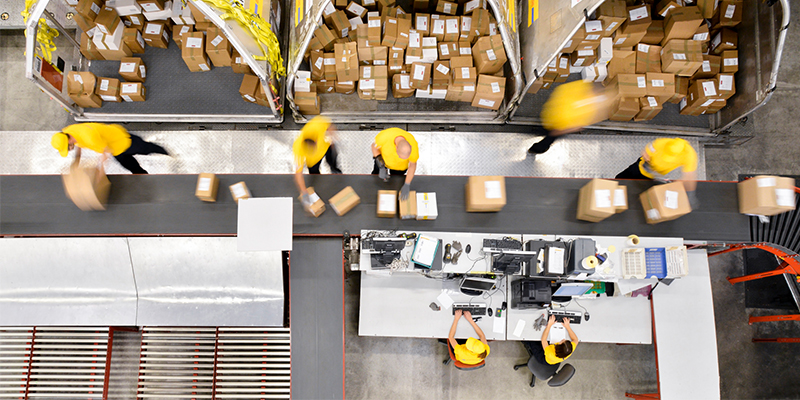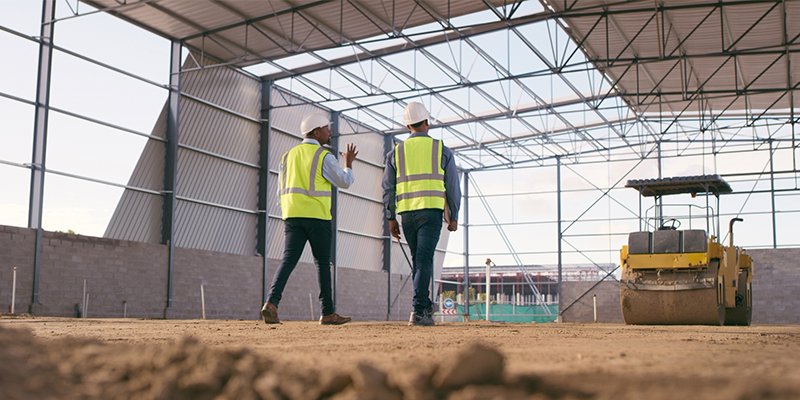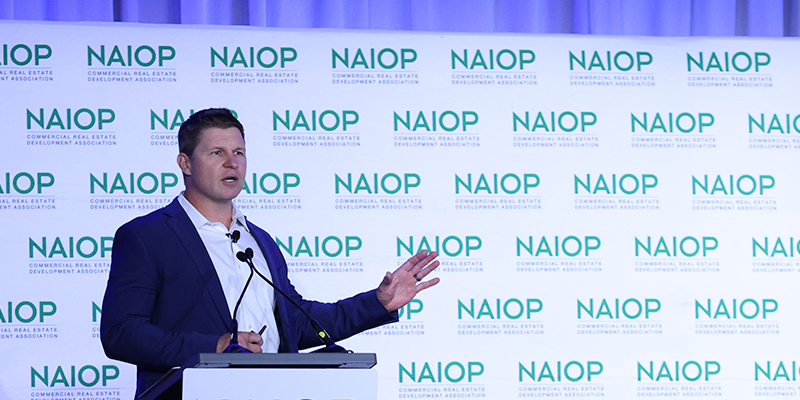It’s hard to get a sense of how big the reverse logistics market is becoming, opened Geoffrey Kasselman, SIOR, LEED AP, Partner and Senior Vice President, Workplace Strategy, CRG, in a session this week at NAIOP’s I.CON East: The Industrial Conference in New Jersey.
Other panelists were Steve Hess, LEED AP, IAMC, Vice President Real Estate Development Americas, DHL Supply Chain; Cloteen Jasmin, Esq., Atlanta Market Leader and Senior Vice President, Ryan Companies US; John Morris, President, Americas Industrial & Logistics, CBRE; and Frank Di Roma, OAA, MRAIC, Principal, Ware Malcomb.
Today e-commerce is a $5 trillion market that is projected to soar past $7 trillion by 2025. Of those sales, about one-third – totaling more than $1.25 trillion and expected to reach close to $2 trillion by 2027 – are returned and therefore must go through a return logistics flow.
Even with a 30% return rate, 95% of consumers say they’ll still buy online again if they have a positive return experience, and 47% of consumers prefer to return in-store versus through the mail. It’s important to note that the 47% rate was measured during the COVID-19 pandemic, when people were more selective with visiting stores; prior to 2020, that number was closer to 60%.
The costs of reverse logistics isn’t low. For an average unit of returns, expenses for customer care, transportation, processing, and discount/liquidation losses can total anywhere from $20.70-45.25. In simpler terms, the return of a $50 item can have up to $35 in financial loss. Compound those fees with the expenses of the “human element” – the time costs of an employee chatting online with a customer initiating the return, processing the package, and inspecting the item to determine if it’s eligible for resale.
There are several key real estate considerations for retailers building their reverse logistics strategies:
- Should reverse logistics be co-located with forward operations? In other words, should product returns come into facilities where new orders are heading out the door?
- Is a modern Class A facility needed, or will an older facility work just as well? Obsolete vacant big box retail spaces, including former car dealerships, are located close to consumers and are prime to be repurposed as returns processing facilities.
- Are there specific temperature needs in play, such as requirements for ambient or controlled temperatures?
- Rackspace and low versus tall clear height ceilings.
- Efficiencies gained by using a third-party logistics (3PL) facilitator.
Location strategies are also being shaped by decarbonization and ESG goals, as well as availability of parking or access to mass transportation.
From an environmental standpoint, consumers are becoming more conscious about waste generated by seasonal or large-scale item returns that aren’t resold, but immediately marked as trash. In 2021, 5.8 billion pounds of returns went into landfills. Will consumers increase their appetite toward used or refurbished goods, not just for economic savings but out of environmental consciousness?
A growing generation of buyers may expect more from retailers and how they salvage or resell goods in lieu of sending them to the landfill. A quarter of returns head to liquidation, where resellers like Tuesday Morning and Big Lots can buy mixed pallets of goods to sell in their stores.
Retailers that show that employ forward-thinking return strategies will win this race, agreed the panel. Amazon’s partnership with Kohl’s stores to accept returns in-store has been hugely successful. Kohl’s has been able to capture higher sales as people stopping by to drop off a return end up making impulse purchases as they make their way through the store.
In closing, Kasselman predicted that an innovative developer could turn a reverse logistics approach into a niche product and run with it. “Like was done with truck terminals and cold storage, expect a developer to create it from the inside out – design, build, package, sell,” he said.
This post is brought to you by JLL, the social media and conference blog sponsor of NAIOP’s I.CON East 2022. Learn more about JLL at www.us.jll.com or www.jll.ca.









